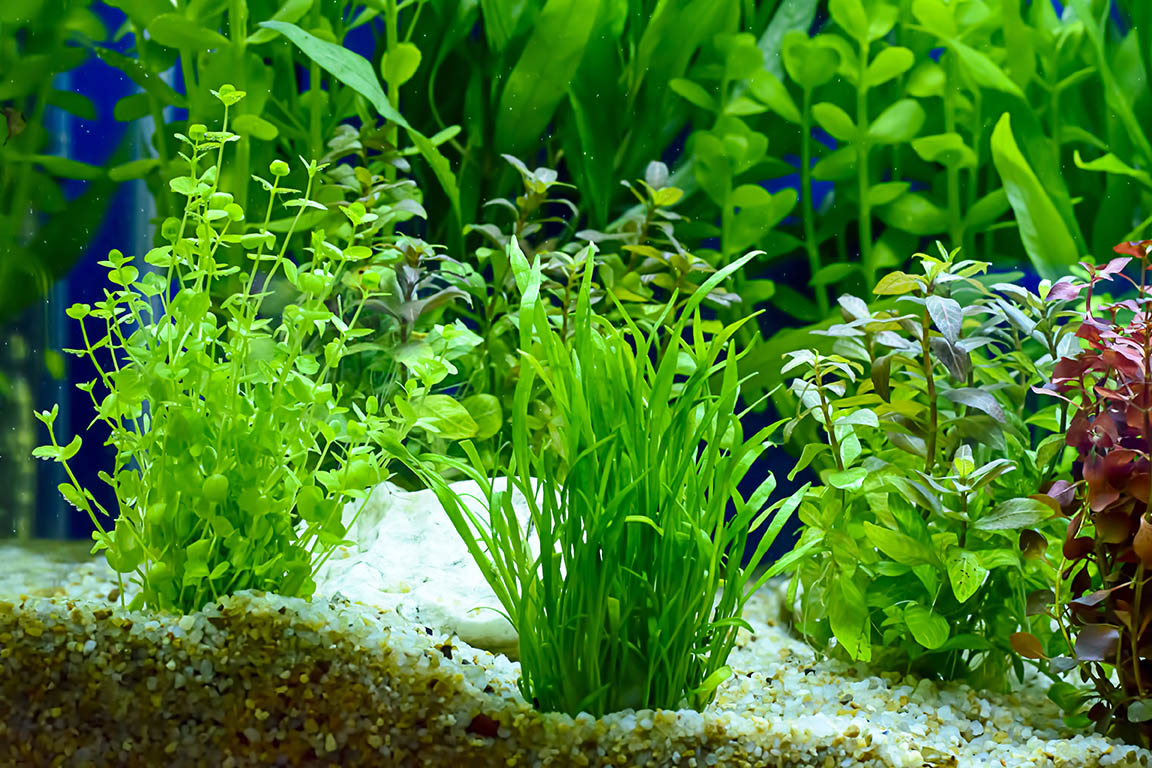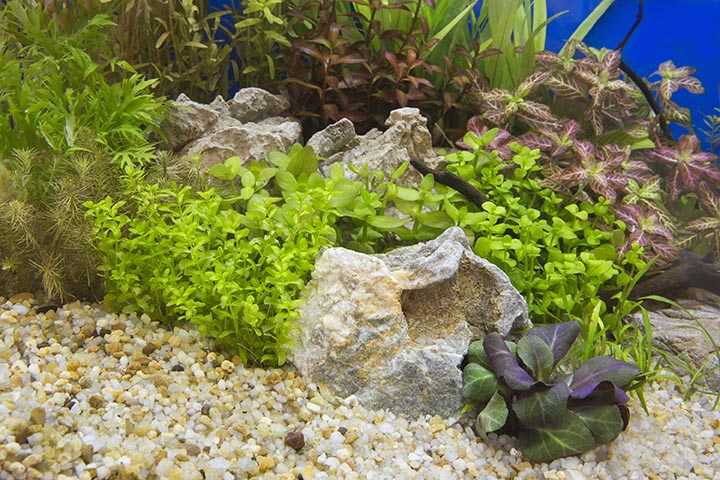Why aquarium plants turn brown
There is something fascinating about aquariums and they nearly always grab your attention. Yet it is not just the fish that are a decisive factor in making them so eye-catching, the aquatic plants can also act as a further highlight. Plants are also important for aquatic life because they produce oxygen during the day and improve the water quality in the tank by using up excess nutrients such as nitrate and phosphate. If the aquarium plants’ leaves turn yellow or brown or become perforated though, they are no longer particularly nice to look at. But why do aquarium plants turn brown and what can you do to counteract this?
Symptoms of nutrient deficiencies
One possible cause can be a lack of certain nutrients or trace elements in the aquarium. Plants need various nutrients to grow. If one of these nutrients is missing or only insufficiently available, deficiencies can ensue. In accordance with Liebig’s Law of the Minimum, this deficiency still arises even if there is an excess of the other required nutrients. It is therefore extremely important for the aquarium to contain enough of each individual nutrient required.
The most important macronutrients for plants include phosphorous, nitrogen, potassium and magnesium.

Phosphorus
Water tests can be used to detect phosphorous in the form of phosphate. Aquariums should contain neither too much nor too little phosphate. Too much phosphate often leads to brown spots developing on leaves and can furthermore encourage unwanted plants to grow. Phosphate deficiency, on the other hand, causes poor growth and small shoots. Stem plants are good indicators of phosphate deficiency as they grow quickly and therefore rapidly display the symptoms described. A deficiency can also cause some species of aquatic plants to turn violet or dark in colour.
Nitrogen
A nitrogen deficiency primarily affects older leaves. These turn yellow to brownish starting from the tip. Crippled or stunted growth of new leaves can also ensue. It is even possible for leaves to assume a reddish hue. One method of testing the nitrogen level in aquariums is by using a nitrate test.
Potassium
Plants’ leaves can also be damaged by a potassium deficiency. This often results from strong lighting and the use of CO2 fertilisers. The first sign of deficiency is often in the form of black dots on the plants’ leaves, which then develop into holes. Perforated leaves and reduced growth are therefore common symptoms of a potassium deficiency. Yellowish leaves and stunted growth are also possible.
Magnesium
Magnesium is an important nutrient for photosynthesis as it is part of the green colour pigment. A deficiency can be identified through a pale or yellow discolouration of leaves (usually older leaves). The leaf veins, on the other hand, tend to remain green.
Micronutrients
Unlike macronutrients, plants only need a small amount of micronutrients. However, aquariums still have to contain these for plants to grow. The most important micronutrient is iron, although copper, manganese, boron, calcium and zinc are also required.

Iron
An iron deficiency tends to affect the newer leaves on aquarium plants. Less chlorophyll develops in the new leaves, meaning that leaves that would normally be dark green usually remain light green or even turn yellow to white in colour (chlorosis). Stem plants and light-coloured shoot tips can again be good indicators of a deficiency. In the event of a serious iron deficiency, stunted growth and black, dying leaf tissue (necrosis) are also possible.
CO2 deficiency as a possible cause
In addition to nutrients, aquariums must also contain a sufficient amount of carbon dioxide as plants need this for photosynthesis and therefore growth. Most aquariums automatically contain enough CO2 so there is no need to add more. However, if an aquarium only contains a few fish or solely contains plants, it can be useful to add CO2. Typical signs of a CO2 deficiency include stunted and generally poor plant growth. If these symptoms arise, you should therefore check the CO2 level and add CO2 if required. In some cases, it can therefore be very important to use a CO2 fertiliser.
Substrate
The substrate can also often cause aquarium plants to turn brown or not grow properly. This is because it is one of the basic requirements for biological balance in an aquarium and supplies your plants with important nutrients. Through their roots, plants absorb various minerals from the substrate, which they need for their growth. If the substrate becomes compacted, plants can no longer absorb nutrients via their roots and a nutrient deficiency can ensue.
Other causes
When adding new aquatic plants, their leaves can quickly turn brown. The plants are usually grown above water. If they are then used underwater as aquarium plants, they quickly adapt to the new environment and produce new leaves. The old leaves (‘air leaves’) turn brown and gradually drop. The aquarium inhabitants can also be responsible for the leaves turning brown. The leaf epidermis can be damaged by snails or plecos on the leaves. These animals also damage the leaves by eating them. This can then cause the leaves to turn brown and/or become perforated, and in the worst-case scenario even to die. In rare cases, brown aquarium plants can also be caused by a lack of light. You should therefore ensure that the light is set correctly. Furthermore, different plants have different requirements in terms of light. More information on the right aquarium lighting can be found here.
The right handling
For healthy plants, it is therefore important to keep an eye on the overall picture in the aquarium. A nutrient-rich substrate is equally as important as the presence of sufficient macronutrients and trace elements. You should also pay attention to the lighting and water pollution. When setting up the aquarium, you should furthermore make sure you choose fish that are suitable for the plants.
If the leaves on your aquarium plants start to discolour, you need to take action quickly to prevent them from dying. Check the lighting and carbon dioxide supply in the tank and perform water tests. The latter can tell you if there is a potential nutrient deficiency. If this is the case, you should add an appropriate fertiliser. Plant fertilisers usually contain the most important nutrients and can therefore help combat yellow and brown aquarium plants or plant parts. They can furthermore promote healthy and flourishing plant growth in the aquarium.

